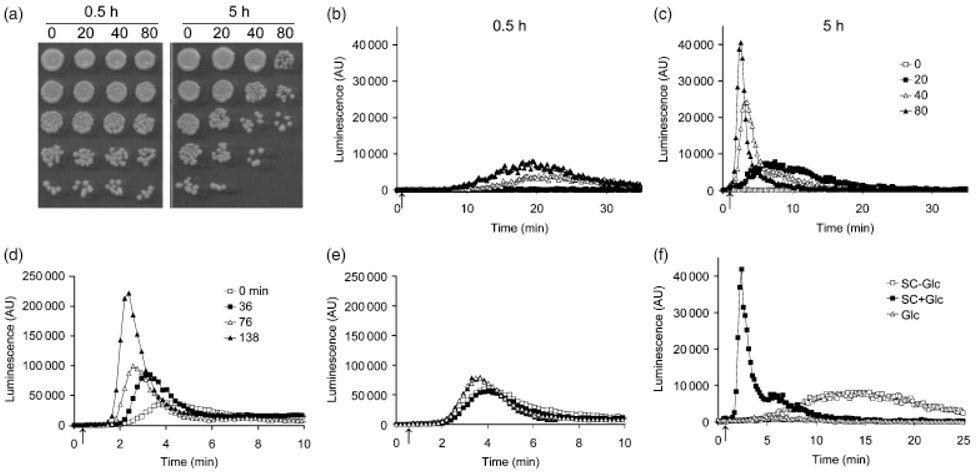Fig. 2.
Amiodarone induced toxicity and Ca2+ influx are both dependent on metabolic state. (a) Yeast cultures were grown to stationary phase and transferred to fresh SC medium for 0.5 h (left panel) or 5 h (right panel). Viability was assessed on YPD agar after 15 min exposure to amiodarone (0–80 µM). Cells (0.5 0D600 nm units) were spotted in serial fivefold dilutions in each column, (b–c) Ca2+ influx was monitored in cultures freshly transferred (0.5 h) from stationary phase to SC medium or after 5 h. tuminescence is in arbitrary units (AU). Dose dependence of amiodarone-induced aequorin-coelenterazine luminescence is greatly diminished in stationary phase cells (b), but recovers after 5 h growth in fresh medium (c). The arrow indicates the injection point of amiodarone. Data are representative of at least two experiments, (d) Time-dependent recovery of Ca2+ influx (luminescence) following transfer to fresh SC medium. The arrow indicates injection of 40 µM amiodarone. (e) Time-dependence of Ca2+ influx (luminescence) of cultures grown as in (d), but in the presence of 50 g mL−1 cycloheximide. Data are representative of at least two separate experiments. (f) Aequorin-coelenterazine luminescence of yeast cultures grown to stationary phase and transferred to fresh media with (SC+Glc) or without (SC−Glc) 2% glucose, or 2% glucose in water (Glc) for 2.5 h before injection of 40 µM amiodarone (arrow).

